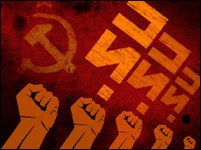STS's mains characteristics
| Characteristic | Value |
| Mass of STS at the beginning, t | 2046 |
| Thrust at launch, tf | 3076 |
| Specification of the Orbiter | |
| Mass at launch, t | 109 |
| Maximum mass at landing, t | 96 |
| Payload mass, t | 20 |
| Volume of the crew cabine, m³ | 71 |
| Dimensional specifications | |
| Length, m | 34.24 |
| Wingspan, m | 23.79 |
| Height, m | 17.25 |
| Length of the payload bay, m | 18.3 |
| Diameter of the payload bay, m | 4.6 |
| Quantity of flight | 100 |
| Mass of the structure, t | 68.586 |
| Heat shield tiles, number | 24000 |
| Circular work orbit, km | 185 to 1000 |
| Crew | 7 |
| Total mass of the 1st stage, t | 1180 |
| Mass of solid fuel, t | 950 |
| Pulverulent aluminium powder (combustible), % | 16 |
| Perchlorate of ammonium (combustive), % | 69.6 |
| Iron oxyde powder (catalyst), % | 0.4 |
| Polybutadiene Acrylonitrile or Hydroxyl-terminated polybutadiene (polymer), % | 12 |
| Epoxy curring agent (catalyst), % | 2 |
| Total mass of the 2nd stage, t | 757 |
| Mass of oxygen, t | ~600 |
| Mass of hydrogen, t | ~100 |
| Engine of the 2nd stage (SSME) | |
| Thrust on the sea level (100% thrust), tf | 170 |
| Thrust in vacuum (100% thrust), tf | 213 |
| Dimensional specifications of the STS | |
| Height, m | 56.14 |
| Width, m | 23.79 |
| Dimensional specifications of the 1st stage | |
| Height, m | 45.6 |
| Diameter, m | 3.71 |
| Dimensional specifications of the external tank | |
| Height, m | 46.9 |
| Diameter, m | 8.4 |
| Uses | |
| 1st stage, flight | 20 |
| 2nd stage (external tank), flight | 100 (1) |
| Azimuth of launch, ° | 35-120 |
| Minimal duration between 2 consecutive flights, days | 25 |
The former Soviet Union's analogue was the launch system. The decision to go with development of this system was in 1974-1976 but the program was to gear up. The Buran (snowstorm blizzard) orbiter was not launched atop Energiya launch vehicle until 1988, although Energiya test launch was conducted successfully the Buran in 1987. During the test flight, Buran flew two orbits a crew and successfully returned to This turned out to be the one and only flight. The program put on hold and then cancelled 1993.
Beyond appearances, however, there are several important differences between the two Shuttle systems. the most significant is that the Shuttle was always intended to carry into space but on its only the Buran flew without a crew, it was designed to accommodate human as well. At one level, clearly U.S. Shuttle was designed as a program to the Apollo and Skylab that would send humans aloft on routine basis. As Tom Wolfe described The Right Stuff, the U.S. and aerospace cultures were dominated first by and then by astronauts, so some say that flying people, not just into space was always a priority. is still true today, as NASA's spaceflight efforts on Shuttle and the Space Station spark the public's imagination pave the way politically and budgetarily robotic spacecraft missions, ground-based astronomy, and aeronautics.

